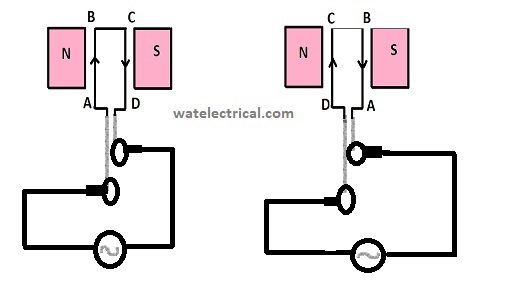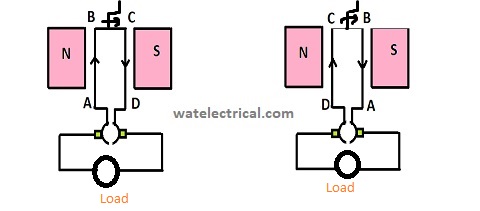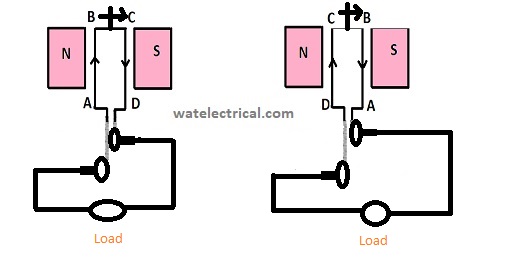The system of both the motoring and the generating is nearly alike. In DC, there is no constructional discrepancy among the generating and the utilizing machine. Likewise, in AC, both the utilizing and the generating devices have the identical constructional innovations. But, the construction of these two tools varies at a time I,e that is the acceptance of AC and DC. In this study, we shall consider the basics of what is utilizing and generating machine, and the significant discrepancies between a machine and a dynamo.
What is Motor?
It is a device that transforms the form of the input electrical energy to an output mechanical energy. It is mainly used in household and industrial applications. Depending upon the type of input applied, these are categorized into AC and DC types. If the rotor winding is given a supply of DC, then it acts as a DC type. If it is supplied alternating current, then it acts as an AC type.
What is a Generator?
A Generator is a tool that modifies the application of the input mechanical power to an output electrical power. It is mainly used in power stations for the generation of electricity. Depending on the devices used in the armature core it acts as AC and DC type machine. If the armature uses a commutator, it acts as a DC type and if it uses slip rings, then it acts as an AC type.
Difference Between Motor and Generator
The working of both these machines will be different. The input given to these machines will be electrical input for the former and mechanical input for the latter.
The construction of these machines is similar in DC type and in AC type. In DC machines, the commutator is used whereas in AC type slip rings are used. The commutator is used for changing the current direction from alternating to unidirectional in the case of a DC generating machine. The same commutator is used to alter the current direction in the coil in the case of a DC utilizing the machine.
In AC machines, instead of a commutator, slip rings are used. These rings are used to maintain the current alternating in the case of an AC generating machine whereas these are used to deliver the continuous alternating current in the case of an AC utilizing machine.
| Motor | Generator |
| It changes the form of Electrical Energy to Mechanical Energy | It changes the form of mechanical Energy to Electrical Energy |
| It utilizes the energy | It generates the energy |
| The shaft of this machine is rotated by the magnetic force developed | The shaft of this machine is rotated by the prime mover |
| The current is supplied to the windings by the supply | The current is produced inside and supplied to the armature windings |
| The input given to this machine is electrical I,e either AC or DC and the output is mechanical. | The input given to this machine is mechanical I,e either AC or DC and the output is electrical. |
| Depending on the type of supply given it is classified as a DC or an AC motor | The input is given by a prime mover. The output can be either DC or AC. If the output is then it is a DC Generator. If it is AC then it is an Alternator. |
| It works on the principle of Faraday’s law of Electromagnetic Induction and Lorentz force equation | It also works on the principle of Faraday’s law of Electromagnetic Induction |
| Back EMF is induced | Voltage is generated |
| V = E + Ia Ra | E = V + Ia Ra |
| Fleming’s Left-hand rule is used to find force direction | Fleming’s right-hand rule is used to find the current direction |
| A commutator is used to maintain the current alternating in the winding under the influence of the magnetic field | A commutator is used for the production of unidirectional torque |
| Brushes are used to supply the current from the source in the case of DC type | Brushes are used for the receiving of current from the commutator in the case of DC type |
| Slip rings are used to maintain the current alternating in the case of AC type | Slip rings are used to maintain the current alternating in the case of AC type |
| These are classified into different types depending on the excitation given. They are the separately excited type and the self- excited type | These are also classified into different types depending on the excitation given. They are the separately excited type and the self-excited type. |
| Example: Any household appliance that includes a motor like a mixer grinder, trimmers, and submersible motors. | Example: In power stations and can also find application in household and office premises in the case of a power failure. |
| The working of the DC motor is shown in the figure below.
The working of the AC utilizing machine is shown in the figure below.
| The working of the DC generating machine is shown in the figure below.
The working of the AC generating machine is shown in the figure below.
|
Thus, in this article, we had an overview of what are the basic rotating machines, and also we had also studied the differentiation between their operations. Here is a question for the readers, what is the role of the commutator in any machine?
Picture Credit




Leave a Reply